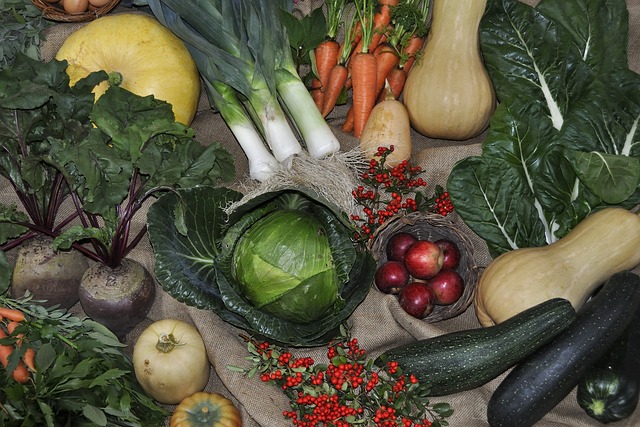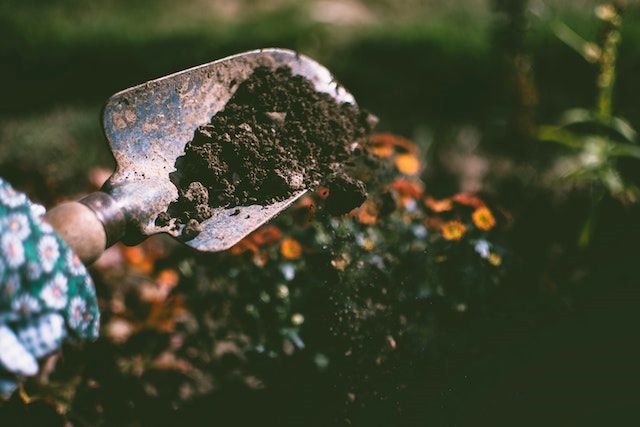Your Seasonal Planting Guide Tips
Having a seasonal planting guide specific to your location is a great tool to help you get started with growing your own veggies.
Gardeners around the world, love the first signs of spring. Warming temperatures and clear, sunny days signal the exciting beginning of planting season.
But what if you could maintain a beautiful, budding garden year-round, even through the darkest, coldest winter months?
As it happens, every gardening enthusiast can achieve four-season gardening success with a little understanding of seasonal gardening and some planning.
Overview of Planting Seasons
When it comes to gardening, timing is everything. Knowing the best plants to grow each season can help you create a stunning and thriving garden year-round. Whether you’re interested in colorful flowers or bountiful vegetable harvests, understanding the seasonal planting guide is key to successful gardening.
Spring
As the ground warms up and becomes easier to dig in, spring is the perfect time to get your hands dirty. This season brings refreshing and revitalizing opportunities for gardeners. Bulbs that were planted in the fall or early winter start to come to life, bringing bursts of vibrant colors to your garden. It’s also a great time to plant perennials that will bloom throughout the summer.
For your flower garden, consider planting tulips, daffodils, hyacinths, and irises.
These spring-blooming bulbs will add beauty and color to your outdoor space.
If you want to grow, you can plant cool-season crops like lettuce, peas, spinach, and radishes. These veggies thrive in the cooler temperatures of spring and will provide you with a bountiful harvest.
Remember to check your local planting zones and frost dates to determine the best time to start planting in your area. Every region has its own unique climate, so it’s important to adapt your gardening plans accordingly.
Summer
Summer is the time for lush foliage, vibrant blooms, and delicious harvests. This season offers a wide range of plants to choose from, making it a great opportunity to create a diverse and beautiful garden. Popular summer flowers include roses, sunflowers, zinnias, and marigolds. These colorful blossoms will brighten up any outdoor space.
If you’re interested in growing vegetables, summer is the perfect time for warm-season crops like tomatoes, peppers, cucumbers, and beans. These veggies love the heat and will thrive in the summer sun. Don’t forget to provide them with adequate water and keep an eye out for pests that may be attracted to your garden.
Fall
Fall is a transitional season when it comes to gardening. As the weather cools down, it’s time to start thinking about planting cool-season crops and preparing your garden for the winter ahead. Fall is known for its stunning foliage, and planting shrubs with beautiful autumn colors can create a breathtaking landscape.
When it comes to flowers, consider planting pansies, asters, and ornamental grasses. These plants will add vibrant colors and interesting textures to your garden during the fall months. For your vegetable garden, focus on cool season crops like kale, beetroot, lettuce, carrots, and broccoli. These crops will thrive in the cooler temperatures and give you a fresh harvest.
Winter
Contrary to popular belief, gardening is still possible during the winter months. While the growing season may be slower, there are several plants that can withstand the cold and still provide beauty to your garden. Evergreen trees and shrubs, winter berries, and colorful winter-flowering plants like witch hazel and winter jasmine are great additions to your winter garden.
Another gardening task you can do, is start to prepare your soil in winter, so it’s all ready for sowing if you choose to wait for spring before you start getting dirty again!
During the colder months, it’s also a good time to plan for the upcoming seasons. Take the time to research and choose the best plants for the following year. Consider starting seeds indoors or preparing your garden beds for early spring planting and do your research on what will help you.
Would you consider getting some heat mats? Would you prefer to set up a grow tent, mimic the spring and summer seasons, and continue to grow your own food indoors?
Remember, each season offers its own unique gardening opportunities.
Tips for Successful Seasonal Gardening
Spring gardening is often the most satisfying time for novice and experienced gardeners alike. As the weather warms and the frost thaws, it’s tempting to jump right into planting.
it’s also great to have the fun on your face again!
But it’s important to recognize the drastic change in growing conditions that spring is known for.
Though one season, spring has what you could consider three mini-seasons based on your climate’s frost-free date. These mini-seasons are important to understand because they help you know what plants are in season now and what plants need to wait until later spring.
To make the most of your spring gardening, a seasonal planting chart can serve as your guide. A planting chart provides a visual representation of the optimal planting times for various types of plants, taking into account both your local climate and the needs of different plant varieties. This valuable tool ensures that you plant at the right time for optimal growth and prevents disappointment or failed crops.
For beginners, a gardening calendar is an indispensable resource. It provides a month-by-month breakdown of gardening tasks, including planting, watering, feeding, and harvesting. With a gardening calendar for beginners, you can stay on track and confidently navigate through each season, from planning and planting in spring to maintenance and harvest in fall.
Remember, the best plants to grow each season may vary depending on your region’s climate and weather conditions. Do some research or consult with your local garden center to find out which plants thrive in your area during each season. By following a seasonal planting chart, utilizing a gardening calendar for beginners, and selecting the right plants for each season, you’ll set yourself up for a flourishing garden throughout the year.
FAQ
What is a seasonal planting guide?
A seasonal planting guide is a resource that provides information on the best times to plant specific plants, flowers, or vegetables based on the different seasons of the year. It helps gardeners plan their gardening activities and maximize the success of their plants.
Where can I find a garden planting calendar for my region?
There are various resources available to help you find a garden planting calendar for your specific region. Local gardening centers, agricultural extension offices, and online gardening websites often provide planting calendars tailored to different climates and regions.
How do I determine the planting schedule for my climate?
The planting schedule for your climate can be determined by considering your area’s average frost dates, which indicate the start and end of the frost season. This information is often available through gardening resources specific to your region and can help you plan your planting activities accordingly.
Is there a flower planting guide available for each season?
Yes, there are vegetable and flower planting guides available for each season. These guides provide information on which flowers thrive in specific seasons and offer tips on when to plant and how to care for them. You can find flower planting guides in gardening books, websites, and gardening magazines.
Is there a vegetable planting guide specific to each season?
Yes, there are vegetable planting guides specific to each season. These guides provide information on which vegetables are best suited for different seasons, along with tips on when to sow seeds or transplant seedlings. They can help you maximize your harvest and grow a variety of vegetables throughout the year.
What is a seasonal planting chart, and how can it help me?
A seasonal planting chart is a visual tool that displays the recommended planting times for various plants throughout the year. It can help you plan your gardening activities, ensure proper timing, and avoid common planting mistakes. You can create your own chart or find pre-made ones online or in gardening resources.
Final Few Tips for Beginnerss
– Start with easy-to-grow plants that are suitable for your climate and season.
– Follow a planting calendar or guide specific to your region.
– Consider container gardening if you have limited space or poor soil.
– Prioritize proper watering, sunlight exposure, and soil preparation.
– Stay on top of pest and weed control.
– Take note of any specific care instructions for your chosen plants.
Remember, gardening is a learning process, so don’t be afraid to experiment and ask for advice from seasoned gardeners or local gardening communities.






